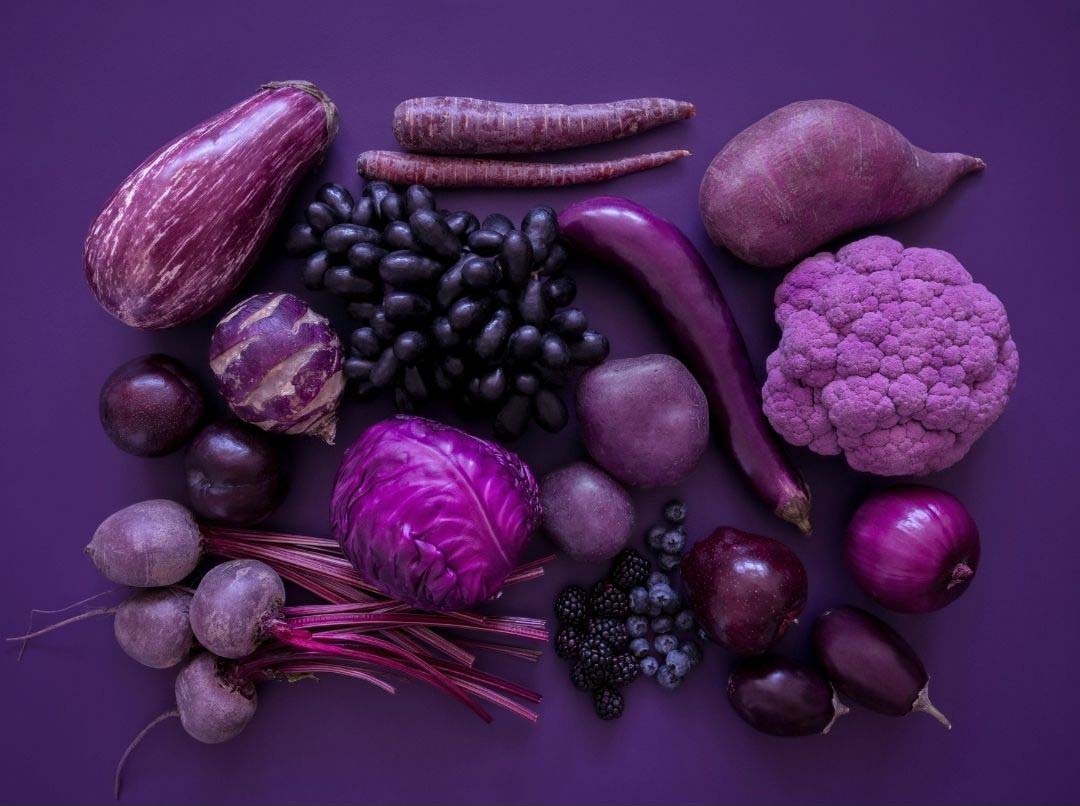Have you ever wondered why some fruits and vegetables are purple? When a fruit or vegetable is purple, it’s a sign that they contain many antioxidants, as the antioxidant anthocyanin is what gives certain foods their deep purple colors. Anthocyanins have a wide range of health benefits, including anti-inflammatory properties, lower blood pressure, anti-cancer properties, and memory enhancement. This article outlines the top six purple foods you should add to your diet to get the most health benefits.
Purple Cabbage
Purple cabbage or also known as red cabbage, gets its vivid purple color from its anthocyanins. This powerful antioxidant gives this already nutrient-packed vegetable an added boost of health benefits. Purple cabbage is also rich in fiber, vitamin A and vitamin C, which can help meet your daily needs. Due to its high level of antioxidants, this cruciferous vegetable also provides you with anti-inflammatory effects. Try using purple cabbage in a slaw, roasted in the oven, or stir fry.
Blackberries
Blackberries are a popular purple fruit loaded with many nutrients and antioxidants. The anthocyanins found in this fruit provide benefits such as protection from cell damage and reducing inflammation in the body. Blackberries are also rich in fiber, vitamin C, folic acid, magnesium, and potassium. All of these nutrients make for a delicious and nutritious fruit choice. Try adding blackberries to yogurt, freeze and add into smoothies, or add to a salad for a tasty boost of nutrition.
Purple Potatoes
Purple potatoes are not your average potato when it comes to nutrition; These colorful potatoes are rich in fiber, potassium, vitamin C and have double the antioxidants compared to the regular potato varieties you see at the grocery store. These valuable antioxidants have positive health benefits, including lowering blood pressure and reducing inflammation. Add purple potatoes into a breakfast potato hash, make baked fries, or even purple mashed potatoes.
Purple Grapes
Grapes are an excellent source of antioxidants. They have two plant compounds that help protect the body from damage: resveratrol and anthocyanins. Resveratrol helps protect your cells from free radicals, which can cause damage to the body, leading to certain diseases. This antioxidant-like compound comes from the skin of the grapes, where you can find anthocyanins as well.
Purple Cauliflower
Purple cauliflower is a vibrant alternative to white-colored varieties. This cruciferous vegetable contains many anthocyanins, which do not occur naturally in nature. Due to a genetic mutation, cauliflower now has a stunning purple color and is loaded with antioxidants for a nutritious boost to this versatile veggie. In addition, purple cauliflower can offer anti-inflammatory benefits that protect against certain cancers and heart disease. Add in purple cauliflower into a stir-fry, roast in the oven, or serve raw with a veggie dip for added flavor.
Elderberries
Elderberries are well known for their deep purple color and immune-supporting effects. You will most likely see a concentrated version of this berry in natural remedies used to treat colds or flu. This immune-enhancing purple food is also rich in fiber and vitamin C. Try using this berry to make a jam, fruit juice, or even your own syrup.




